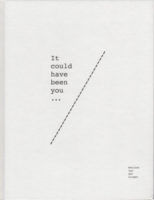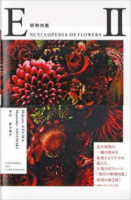A fairly large segment of photography has become solely focused on the production of visual cliches. This development concerns all types of photography, however different they might appear at first (whether visually or functionally). The appeal of cliches is that they provide an instant sense of satisfaction for the viewer, thus creating a connection between her or him and the larger purposes the cliches serve.
Before proceeding any further, it is important to realize that the actual production of cliche photography might in fact entail considerable amounts of work. It is easy to photograph a sunset with a camera phone, say, resulting in a blown-out sun against a dark landscape. It is a lot harder to photograph the same scene in such a way that the resulting picture avoids whatever technical flaws can be easily had.
Cliche photographs always come with a purpose. The cliche itself is not the purpose. It merely serves as the connector, much like a plug that fits into a specific outlet. We see and handle plugs and outlets, but what we are really interested in is the (invisible) electricity that is made to flow. A cliche photograph is like a plug for which viewers provide the outlet: they have to be able to recognize the cliche for it work as such. Once the connection is made, that recognition triggers everything else, at least in part bypassing the viewers’ ability to think critically. When discussing cliches, we need to focus on the underlying “electricity,” and not on the visuals.
The aforementioned mechanism explains why cliches are so commonly used, why, in fact, many people are interested in working with cliche photography. Take, for example, the US presidential campaign. As is obvious from the visual diet served in the media, candidates are eager to get just the right photographs of themselves, and for the most part, photographers are happy to play along (this is a discussion of the kind of push and pull playing out between a candidate and a photographer). This dynamic usually only changes once a candidate, for whatever reason, has fallen out of favour with the general public or the media, in which case the hunt for gotcha pictures (which are cliches of a different kind) is on.
Note that of course not all cliches work equally well with each and every member of a group, society, or culture. Inevitably, their degrees of visual literacy (in the form of awareness of how photographs operate) will be different. What is more, the strength of cliches also varies. One might say that those aiming for very basic biological urges are the strongest: Pornography, for example, is heavily cliched.
Also note that cross-culturally, cliches often don’t work at all. A German weekly recently showed a number of “typically German” photographs to a group of refugees from Eritrea, Iran, Afghanistan, or Syria and asked them what they thought the pictures showed. Perhaps not surprisingly, unless the viewers had become acquainted with what was depicted, the responses were refreshing (here’s the link; note the text is German only). Cliches are not universal, and they often tend to be bewildering or outright nonsensical for someone who is not part of the group that maintains them. But this fact provides an opening to see beyond cliches — we just have to force ourselves to ignore the clear symbols depicted. It might be a photo of Donald Trump, but it’s also a photo of an old man with a rather questionable taste for visuals.
Per se, there is nothing wrong with cliche photography. Considerations of such photography must include the context it is embedded in. Someone looking at a pornographic image for the sake of sexual gratification is unlikely to be bothered by the cliches thus encountered — much like someone looking at a friend’s photograph of her or his young baby is unlikely to point out any problems (unless, of course, there is a severe lack of the kinds of basic social skills that enable societies to function). But not all contexts carry equal weight. Consequently, while the use of cliches in some contexts (such as family photographs or pornography) provides little, if any, reason for concern, the same cannot be said for other contexts. For a cliche to be if not dangerous then at least harmful, there has to be something at stake for a larger group.
An example might provide more clarity. It is fairly safe and obvious to proclaim that journalism provides an essential role in and for most societies (“An informed citizenry is at the heart of a dynamic democracy.” – Thomas Jefferson). By design, and I’m explicitly excluding the Fox News variety here, journalism’s role is to provide its viewers or readers with a chance to further educate themselves, to learn more about a topic. Visual journalism, whether in the form of either photojournalism or documentary photography, should serve that purpose. Obviously, this aim excludes the use of cliches.
Of course, the reality is very different. In particular photojournalism has become a vast cliche-production machinery (this is not to say that all photojournalism fulfills that role: I would estimate that maybe up to 10% of all photojournalism does not). Driven by neoliberal commercialization, the original form of photojournalism has been replaced by one that quickly (and at low, if any, cost) has to deliver dramatic pictures that, ideally, provide constant fodder for news websites’ “pictures of the day” galleries.
Maybe one of the reasons why the photograph of Aylan Kurdi, the dead Syrian toddler found dead on a Turkish beach, shocked and moved so many people (this writer included) is because it was no cliche image. Our capacity to filter out or mentally file away became impotent, and the picture hit us in a spot usually carefully guarded. Cliche photography allows us to engage with pictures on our terms, and not on any others, essentially giving us the option to decide whether we want to learn something (instead of making us learn, whether we want to or not). A picture is not what it depicts, but the photograph of Aylan Kurdi had no other terms than its own — which essentially means the terms of all of those trying to reach the Europe’s safe haven from whatever hell hole they are escaping from. This then would point at the power photojournalism can still have, well could have, if it stopped chasing after easy, simple cliches.
In the context of visual journalism, it’s easy to see how cliches are the exact opposite of what is needed. Only in the case of Fox News (or its left-wing equivalents) can the idea of journalism be to not only confirm, but actually strengthen viewers’ pre-existing ideas. The goal of actual journalism is to properly cover a topic, regardless of whether it confirms or challenges pre-exisiting ideas. Cliches do not challenge anything. Instead, they confirm. So cliches have no role in serious journalism other than to serve as examples of what needs to be investigated (and this usually means to be challenged). And you can’t fight cliches with other cliches. That just doesn’t work.
The same is true for cliches in many other types of photography. The more is at stake for a viewer, the more harm can be caused by cliches.
In the area of “art photography,” cliches mostly result in turning photographs into entertainment. There is nothing wrong with entertainment, which clearly is a form of art. But while we can easily view all entertainment as art (however much or little actual merit it might have), not all art is intended to be entertainment. An artist embracing entertainment thus might want to ask her or himself whether s/he wants to be an artist or an entertainer first: is there a larger goal that contains the risk of challenging the viewers’ ideas, thus possibly resulting in highs and lows of popularity (a concept that clearly has no role in serious art)?
Art can be entertaining, but the entertainment should be more like an added bonus, a possibly unintended consequence, than the main goal. One might argue that excluding cliches from art photography has become impossible, given that “everything has already been photographed.” I often think that when I hear an art photographer argue along those lines, that might say more about where that particular artist is at with their own practice than about photography itself.
This is not to say that cliches can or should be avoided. Given that there are so many photographs in the world, and given that there is such a breadth of visual recognition of tropes, cliches can serve an important role in art: they disarm, creating an opening for a message (this is assuming that a photographers wants to have a message, which isn’t a given). Cliches, when carefully used, can turn artists into undercover agents. But the key here lies on “when carefully used.”
The temptation always is to give in to the cliches, because they are so appealing on so many different levels. When making a cliche photograph, there is that tingle of instant satisfaction, and you just know you’re mining a well-trodden territory that will create easy access to an audience. Many of us — this writer included (see that “lovely” example at the top of this piece, taken from a plane with a phone) — take cliche photographs on a regular basis, and there’s nothing wrong with it.
But again, context matters. The moment your aspiration lies in the area of art, you’re in a kind of trouble you might get out of only partially. In the arts, cliche photographs act like cat urine: it’s very hard to get rid off the stench once it has attached itself to the wrong location. Cliche photographs can work in the arts. But if they aren’t made to work carefully, you not only find yourself outside of what art aspires to be, you often also end up being in the territory of lousy entertainment.
Ultimately, given that cliches are so easy to be had and so hard to avoid, they ask of photographers to be cognizant of the territory. Regardless of what context you work in, that’s a tough job. You have to know what you’re doing, you have to be able to identify cliches (not all cliches are equally simple and easily identifiable). That sort of engagement happens at the level of editing, of looking at your — and everybody else’s — work (as if editing wasn’t hard enough already!). But in a day and age where photographs are so widely used, and where so many people use photographs very specifically because of that, photographers have to more deeply engage with their history’s medium, with what photographs say and do (and why).
Photographs “are not made just to be seen,” Francis Hodgson just wrote, “They are made to be thought about.” Is this a good picture? If it is why and how? Given they create so much immediate satisfaction and recognition, cliches are tempting us to think of them as good. They might be. But usually, they’re not. We need to see more. We should ask of photography to do better.





